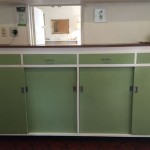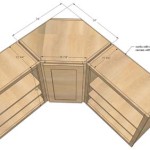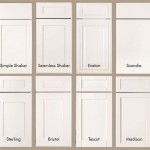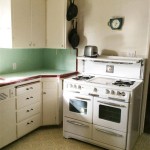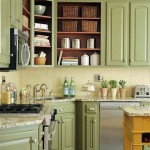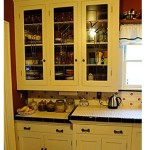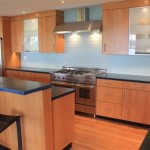Average Depth of Base Kitchen Cabinets: A Comprehensive Guide
When designing a kitchen, determining the ideal depth of base cabinets is crucial for both functionality and aesthetics. The standard depth of base cabinets plays a significant role in space utilization, storage capacity, and overall kitchen layout. This guide explores the average depth of base kitchen cabinets, its benefits, and considerations for maximizing kitchen efficiency.
### Standard Depth of Base Kitchen CabinetsThe average depth of base kitchen cabinets typically ranges from 24 to 27 inches, with 24 inches being the most common. This measurement refers to the distance from the front of the cabinet's face frame to the back of the cabinet box. The standard depth provides ample space for storing various kitchen items, including cookware, bakeware, and other utensils.
### Benefits of Standard Depth Cabinets- Improved Accessibility: Standard depth cabinets allow for easy access to stored items without requiring excessive reaching or bending.
- Maximum Storage Capacity: The standard depth maximizes storage capacity, accommodating a wide range of kitchenware and appliances.
- Compatible with Standard Appliances: Most kitchen appliances, such as dishwashers and ovens, are designed to fit standard depth cabinets.
- Enhanced Workspace: Standard depth cabinets provide an adequate workspace when paired with countertops of standard depth, allowing for comfortable meal preparation.
While standard depth cabinets are widely used, there are instances where non-standard depths may be necessary. For example:
- Expanded Storage: Cabinets with depths greater than 27 inches offer increased storage capacity for bulky items or specialized appliances.
- Galley Kitchens: In narrow galley kitchens, reducing cabinet depth to 18-21 inches can enhance accessibility and create a more open feel.
- Deep Countertops: Kitchens with countertops deeper than 24 inches may benefit from deeper cabinets to maintain a balanced proportion.
When selecting the depth of base kitchen cabinets, several factors should be taken into account:
- Kitchen Layout: The overall kitchen design and available space will influence the suitability of standard or non-standard depths.
- Storage Needs: Consider the types and quantities of items that will be stored in the cabinets to determine the necessary storage capacity.
- Countertop Depth: The depth of the countertops should match or exceed the depth of the cabinets to maintain a cohesive visual appearance.
- Ergonomics: The depth of the cabinets should allow for comfortable access and usage without causing strain or discomfort.
The average depth of base kitchen cabinets is typically 24 inches, offering a balance between functionality and aesthetics. Non-standard depths may be necessary in specific kitchen designs, but careful consideration of factors such as storage needs, layout, and ergonomics is crucial. By choosing the appropriate depth, homeowners can maximize storage capacity, enhance accessibility, and create a kitchen that meets their unique requirements.

Base Cabinet Size Chart Builders Surplus

Standard Cabinet Dimensions

Kitchen Cabinet Sizes What Are Standard Dimensions Of Cabinets

Kitchen Cabinet Dimensions

Kitchen Cabinet Dimensions Size Guide

Woodcraft Custom Kitchen Cabinet Measurements
Guide To Kitchen Cabinet Sizes And Dimensions

Proper Depth For Frameless Cabinets Kitchen Base Cabinet Drawers Drawing

Standard Kitchen Base Cabinets

Tiny House Kitchen Cabinets Ryan S Design Guide To The Life

